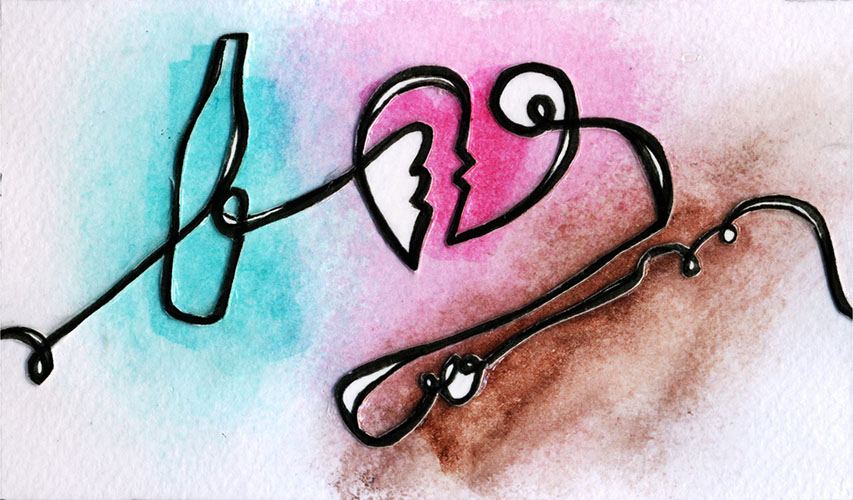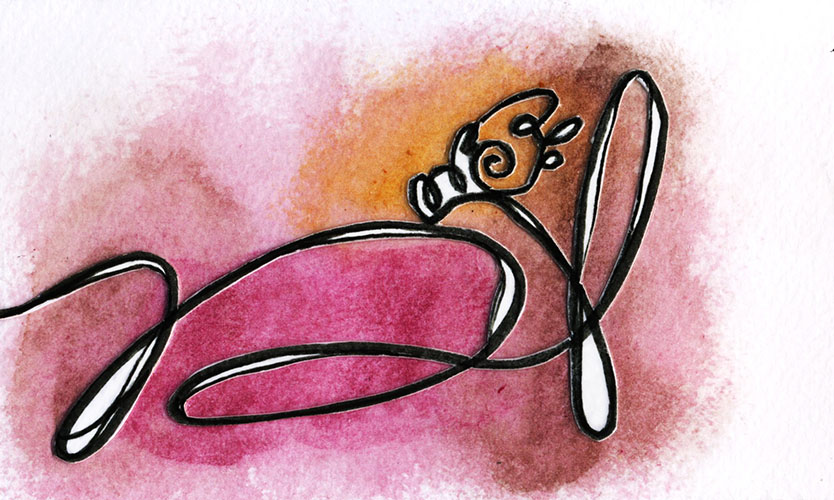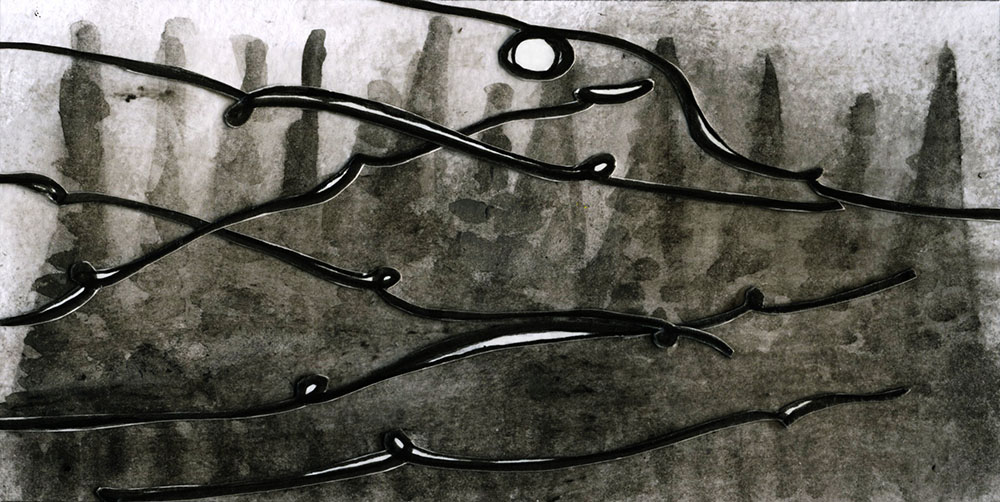Few writers are as synonymous with American detective fiction as Raymond Chandler. Ironically, Chandler, who is arguably the greatest stylist of the American idiom (see, for instance, the opening lines of his short story “Red Wind”), was actually a product of the transatlantic world. In a sense Chandler was more British than he was American.
Born on July 23, 1888 in Chicago to an Irish mother and a Pennsylvania-born father, young Raymond Thornton Chandler spent his first years of life in late Victorian Nebraska. Here his father, Maurice, lost his long battle with the bottle, and by 1895, Raymond and his mother were forced to move to Ireland. The Chandlers were of Anglo-Irish stock. They had fled to southern Ireland in the 17th century to escape Oliver Cromwell’s persecution of the Quakers. Maurice Chandler’s family first settled in Pennsylvania in the 1650s. Florence Thornton, Raymond’s mother, came from the same Protestant Irish milieu as the Chandler family.
From 1895 until 1912, Raymond lived in Ireland and London. He was educated at Dulwich College, one of those classic English boarding schools that produced the “young lions” of the British Empire. By all appearances, Raymond was bound to join the respectable British middle class. He took the civil service exams, finished first in classics and third overall, and subsequently landed a job with the British Admiralty. In 1907 he became a naturalized British citizen.
The staid life of a white-collar bureaucrat bored Raymond, and before long he took up the pen as a freelance journalist. This line of work proved interesting, but far from lucrative. As a result, Chandler returned to the land of his birth in 1912. He moved to southern California years before the Hollywood boom. He took a slew of odd jobs, including a stringer for tennis rackets. He lived with his mother at a modest bungalow in Los Angeles. It was during this time that Raymond would meet his greatest love — Pearl Eugenie Pascal, nicknamed “Cissy.” At the time Cissy was married to the pianist Julian Pascal, another product of the far-flung Anglosphere who had been born in the West Indies as Goodridge Bowen.
The story of Raymond and Cissy had been covered in-depth by Chandler’s best biographers. In 1923, Florence Chandler, who disapproved of Cissy because of her former marriage and the fact that she was 18 years older than Raymond, died. Less than a year later Raymond and Cissy married. They would remain married until 1954. Cissy’s death caused the then world-famous writer so much grief that he attempted suicide. Chandler, never a teetotaler, hit the bottle hard, and unlike in 1932, when his alcoholism and chronic absenteeism forced him to take up pulp fiction writing after being fired from his job as the vice president of the Dabney Oil Syndicate, Chandler’s creative power did not see him through his grief. In fact, he would publish only one more novel after Cissy’s death, and that book, 1958’s Playback, is considered one of Chandler’s worst.
Raymond Chandler lived the noir life that he wrote about. A drunken loner with a broken heart, Chandler clearly was his own model for his private eye Philip Marlowe. All biographies and studies of Chandler recognize this fact. However, there was one part of Chandler’s life that is often overlooked or under-appreciated. Namely, from 1917 until 1919, Raymond Chandler was a non-commissioned officer who served on the Western Front during World War I.

According to Chandler’s military record, he enlisted with the 50th Regiment Reinforcements of the Canadian Expeditionary Force (CEF) on August 14, 1917. The enlistment occurred in Vancouver, British Columbia. Noticeably, Chandler chose to join the Canadian Army rather than the American Expeditionary Force, even though the US had entered the Great War that April. The CEF had seen quite a lot of action since 1914, with the Battle of Vimy Ridge in 1917 being the unit’s apex. During that battle, the Canadians took Vimy Ridge from the Germans but 10,600 were killed and/or wounded out of an original force of 15,000. One of the reasons for Chandler’s decision may have been the CEF’s generous allowance for dependents. Chandler, who claimed his mother as a dependent, received 60 dollars per month for the widowed Mrs. Chandler.
At his induction, the future detective novelist was listed as being 29-years-old, 5-feet, 9-inches tall, and 140 pounds. He was described by the staff as having a “fresh complexion” with hazel eyes and dark brown hair. His vision was a perfect 20/20, which is surprising as later in life Chandler wore glasses. As for his religion, the son of an aberrant Quaker listed the Church of England. Occupation: journalist. Home address: 127 South Vendome Street, Los Angeles, California, USA. Although Mrs. Chandler is marked down as “widowed” in Raymond’s military file, Raymond actually admitted to the Canadian Army that he did not know for sure whether Maurice Chandler was alive or dead.
After basic training, Chandler and his unit were sent to France to fight “the Hun.” At the same time as he was preparing to partake in battle, Chandler wrote tender letters to Cissy back in Los Angeles. Between August 1917 and June 1918, not too much is known about Chandler’s time in the Canadian Army. On June 6, 1918, Chandler was transferred to England in order to tryout for the vaunted Royal Air Force (RAF). Cadet Chandler’s entry card for the RAF noted that he was a smoker (“10 cigs. 3 pipes. Inhales”), 22-years-old (a boldfaced lie), a moderate drinker, and an 11-month veteran of the Canadian Army. Chandler’s days in the RAF would not last long, as he was demobilized in October 1918 after spending days in the hospital due to a bout of the Spanish flu.
A few things are worth mentioning here. First of all, thousands of British, Canadian, and Commonwealth soldiers applied for the RAF. The novelty of the newest wing of the British armed forces certainly appealed to many, but even more enjoyed the idea of flying over the Western Front rather than sloughing through the mud and blood of the trenches. As Richard Overy notes in his 2018 book, RAF: The Birth of the World’s First Air Force, Britain’s air service tended to recruit men from aristocratic or upper-middle-class backgrounds. Furthermore, the sky duels between the British and the Germans over the Western Front created a sense of pageantry, almost as if combat aces were the new knights of the sky. The fact that Chandler was seriously considered for this service speaks volumes about his skills as an infantry soldier.
A second important fact about Chandler’s time as an RAF cadet is the fact that he managed to contract the Spanish flu. Better yet, Chandler was lucky to survive his scrape with the deadly disease, which would ultimately kill more people than World War I itself. Like Dashiell Hammett, the American detective fiction writer whom Chandler is most often compared to, Raymond’s war came to an end because he was simply too sick to go on (Hammett’s war-ending disease was far more serious, as the former operative with the Pinkertons contracted tuberculosis while serving stateside with the US Army).

Now we come to the central mystery of Chandler’s war — what he did in France between the summers of 1917 and 1918. Chandler never wrote at length about his war experience. His lone admission came near the end of his life when, in a letter to a fan, he wrote: “‘Once you’ve had to lead a platoon into direct machine-gun fire, nothing is ever the same again.” Of course, this could be false, as Chandler certainly loved to embellish. However, according to military historian and writer Chris Dickon, by March 1918, Chandler was stationed near Arras, France with the British Columbia Regiment. Less than a year earlier, Arras had been the scene of an apocalyptic showdown between the British and Germans. From April 9th to May 16th, 14 British divisions, including soldiers from the United Kingdom, Canada, Australia, New Zealand, and South Africa, and 9 reserve divisions attacked the German trenches near the all-important French city. The losses were enormous. Along with the aforementioned Canadian bloodbath at Vimy Ridge (which was part of the larger offensive), British forces lost 158,000 casualties. Ultimately, the major offensive to take Arras only managed to relieve German pressure on the French Army, which was experiencing widespread mutinies at that time.
Because of the losses from the year before, Chandler quickly moved up the ranks and became an infantry sergeant. On June 19, 1918, the Western Front was on fire thanks to the German Spring Offensive (Kaiserslacht, or “Kaiser’s Battle”). This offensive, which was engineered by the brilliant General Erich Ludendorff, took German forces from the Eastern Front (where Germany had just ended its war with Russia in a major, but short-lived victory) and welded them with veterans of the Western Front in order to deliver a knockout blow designed to end the war before the American “doughboys” could fully mobilize. The offensive was designed to decimate the British in Flanders before finally defeating the supposedly stronger French armies guarding the Marne River and the route to Paris. Chandler and the CEF were in the thick of it, and on June 19th, Chandler suffered a concussion due to a German artillery shell. The rest in his platoon were killed.
The glaring problem with this story is that Chandler was in England training to be an RAF pilot when the supposed shelling occurred on June 19th. Could it be that Chandler made it all up? As Strand writer Sarah Trott noted back in 2017, Chandler’s greatest war wound may have been a case of “survivor’s guilt” as he was in England “at precisely the time when the four Canadian divisions in France were reorganized in preparation for dispatch to Amiens and the final bloody push against the German line that would end the war.” Without question, Chandler’s unit saw frontline action, but he might have not seen much fighting at all.
Many Chandler aficionados find this hard to believe. They have good reason to be skeptical about a purely rear-echelon Chandler, too. After all, Chandler’s life does bear many of the hallmarks of a veteran suffering from PTSD. There was the alcoholism, the reticence about the war, the constant moodiness and inability to “play nice” with Hollywood. Also, Chandler’s fiction is heavy with war veterans. 1939’s The Big Sleep has General Sternwood and Rusty Reagan, the latter a former gunrunner and non-com in the Irish Republican Army. The Lady in the Lake, which was published in the middle of World War II in 1943 and makes mention of that conflict, features veteran Bill Chess. 1953’s The Long Goodbye, which Chandler considered his greatest achievement, is riddled with former soldiers. Chief among these ex-soldiers is Terry Lennox, the alcoholic rounder who Marlowe sees as a genuine friend — that is until Lennox betrays him at the novel’s conclusion. Even Chandler’s greatest success in Hollywood, the 1946 film noir classic The Blue Dahlia, is about shellshocked former US Navy flyboys back home in California after the war. (The Blue Dahlia, for which Chandler wrote the screenplay, lent its name to the infamous murder victim Elizabeth Short, aka the Black Dahlia whose mutilated and bloodless corpse was found by the LAPD on January 15, 1947.)
Whether Chandler saw combat is, in the end, insignificant. But it is worth noting that he wrote like an embittered old salt. His greatest detective, the “knight errant” Philip Marlowe, took in Los Angeles and Southern California with a jaundiced and somewhat traumatized eye. The cynical worldview that Chandler created in his fiction makes sense if its creator daily fought demons in his own mind. Maybe it is time that we think of Chandler as not an artist working in a populist medium, but rather an overlooked member of the war-weary Lost Generation who, unlike Hemingway, wrote in the language and espoused the attitudes of America’s mostly working and middle-class veterans. •




